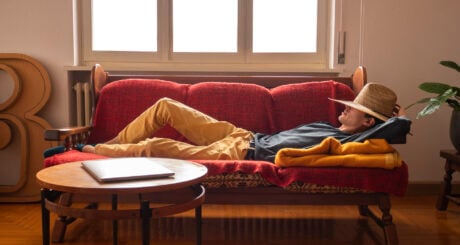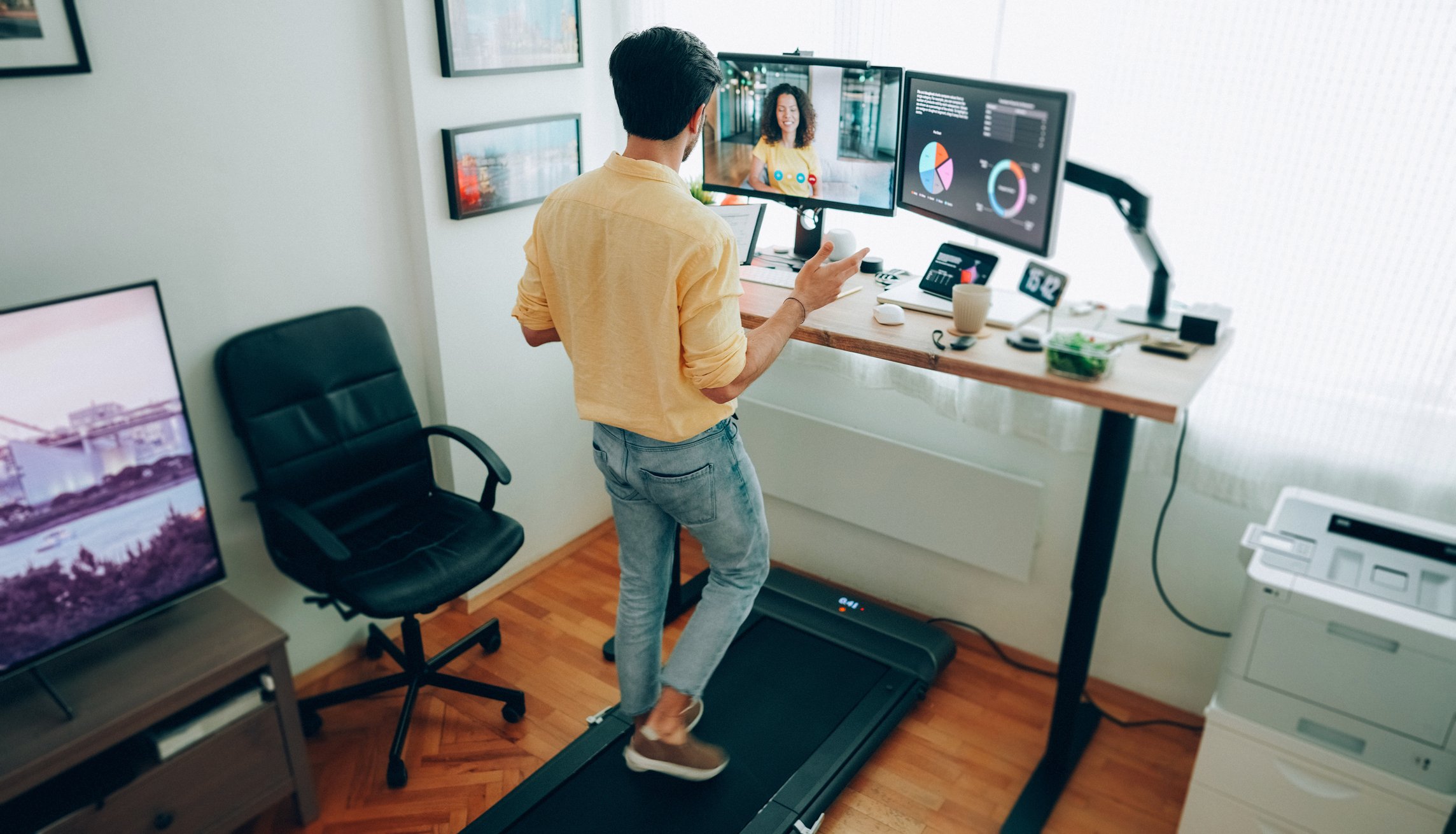Sole traders, small businesses and employees who don’t go into a regular office can claim operational expenses on tax, such as the costs associated with working from home.
Here’s what you need to know about claiming tax deductions on home-based office expenses, which may include anything that you legitimately use to operate your business — from the technology you use to the property where you live.
» MORE: Types of employment in Australia
How the ATO defines a home office expense
The Australian Taxation Office (ATO) defines two types of home office expenses: occupancy and running expenses.
Occupancy expenses
Occupancy expenses include:
- Rent or mortgage interest.
- House insurance premiums.
- Council rates.
- Land taxes.
To be eligible for an occupancy expense, the area within your home where you work must be clearly identifiable as a ‘place of business’.
Additionally, you may be ineligible if you receive personal services income (PSI). To find out if the PSI rules apply to your income, use the ATO’s PSI tool.
Claiming occupancy expenses
The tax deduction is based on the area of the property designated for work. You’ll calculate the floor area of your workspace and claim it as a percentage of the total rent. If your office comprises 20% of the house, you can claim 20% as a deduction.
Running expenses
Running expenses are the costs you incur using your home as an office, which include:
- Utility bills, such as the cost of electricity needed to run your equipment or gas charges for heating your office.
- Mobile or home telephone.
- Internet expenses.
- Office supplies, such as stationery and computer parts.
- Cleaning supplies and costs.
- The cost of repairs or the decline in value of items, such as a laptop, computer, desk, workstation, furniture, and other office furnishings.
Business owners, sole traders and work-from-home employees — basically, anyone who works out of a home office — can all claim running expenses.
Claiming running expenses
Running expenses are calculated based on a percentage system of usage, which can be confusing if you use your phone both personally and for business. The ATO suggests keeping a log and tracking all business calls. Most sole traders list running expenses in their tax returns.
Ideally, you want to create a space dedicated to working. If your ‘office’ is the kitchen table, it can be harder to know how to estimate your deductions.
» MORE: 5 things to know before starting a small business
Home office expenses you can claim for a tax deduction
Anyone who works out of a home office — including sole traders, freelancers and employees — can claim:
- Heating, cooling and lighting costs.
- Phone and internet expenses.
- Professional cleaning fees (of the designated work area).
- Home office equipment and stationery.
- Depreciation of technology and office furniture.
- Business items under $300 (written off in full).
Expenses you can’t claim:
- Any expenses, like computer equipment, that your employer provided to you.
- Any expenses you have been reimbursed for already.
- Costs related to your family, not your business (like an iPad app for the kids).
- Coffee, home lunches and food.
- Expenses from a hobby, not a business.
A simple way to view all expenses:
- Expenses must be for your business, not for personal reasons.
- If you plan to use the expense outside of the business, you can only claim a percentage of the cost.
Always keep records so you can track your expenses. Ask your accountant or tax agent if you’re unsure if an expense is a tax deduction. They’ll be able to strategise with you on the best way to approach your deductions.
🤓 Nerdy Tip: Accountants help with more than numbers
While you might save a few dollars doing your taxes using software, partnering with an accountant you can lean on beyond tax time will help your business grow. Just because you work alone, it doesn’t mean you have to handle your taxes on your own.
Methods for expensing your home office
As a sole trader, if your principal place of business is the home, the new changes won’t likely affect you. But if you’re in a coworking space for most of your week, you might follow the new rules for hybrid employees. What’s important is where you spend most of your time.
As of 2023, ‘working from home’ deductions are claimable in two ways: the revised fixed-rate or actual cost.
- The revised fixed-rate method claims an amount per hour for additional running expenses. You can claim up to 67 cents per hour and no longer need a dedicated home office. To claim using this method, you’ll need a record of your working hours, such as a timesheet, and evidence, such as bills and receipts, that you paid for the expenses you plan to deduct.
- The actual cost method claims specific additional running expenses you incur by working from home. To claim using this method, you’ll need evidence of purchase and your work-related use of the expenses you plan to deduct.
DIVE EVEN DEEPER

How to Make Passive Income
Passive income can offer breathing space when your finances are tight, but whether a cash stream is passive or not isn’t always clear-cut.

Discretionary Spending: The Extras, Not Essentials
Discretionary expenses are things you want, but aren’t essential. Tracking such spending can help you save more for emergencies and retirement.

What Is Freelancing?
Get out of debt by focusing your budget, setting up a repayment plan, reducing expenses, increasing income and saving whatever is left over.

How to Pay Tax as a Sole Trader
Sole traders pay at the individual income tax rate. You can earn up to $18,200 as a sole trader without paying tax.

